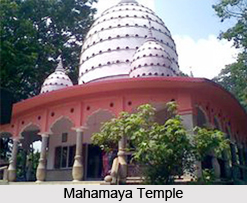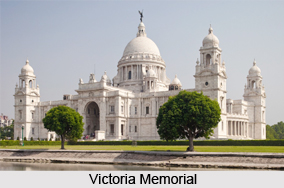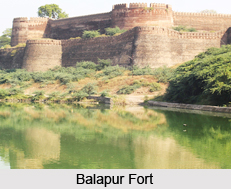 Lamayuru monastery is the most overpoweringly built monastery in India. It is also one of the oldest and largest monasteries in Ladakh region in Jammu and Kashmir. This Tibetan Buddhist monastery belongs to Red-Hat Sect of Buddhism. The monastery houses 150 monks but in the past it had housed 400 monks, many of which are now based in gompas in the Lamayuru village. Spiritual learners and travellers are lured to the monastery by its sacred aura. The monastery is currently affiliated with the Drikung Kagyu school of Buddhism. Throughout the year, the monastery attracts tourists from various corners of the world.
Lamayuru monastery is the most overpoweringly built monastery in India. It is also one of the oldest and largest monasteries in Ladakh region in Jammu and Kashmir. This Tibetan Buddhist monastery belongs to Red-Hat Sect of Buddhism. The monastery houses 150 monks but in the past it had housed 400 monks, many of which are now based in gompas in the Lamayuru village. Spiritual learners and travellers are lured to the monastery by its sacred aura. The monastery is currently affiliated with the Drikung Kagyu school of Buddhism. Throughout the year, the monastery attracts tourists from various corners of the world.
Location of Lamayuru Monastery
Perched at an altitude of 11,520 ft., the Lamayuru Monastery is a located at Lamayouro, Leh district, India. It is situated on the Srinagar - Kargil - Leh road 15 km east of the Fotu La. It is positioned at a height of 3,510 m.
History of Lamayuru Monastery
Lamayuru or Yung Drung Tharpaling is one of the most ancient and largest monasteries in Ladakh, and was famed to be the first monastery to propagate Bon religion, which was distinct from Tibetan Buddhism but with the same teachings and terminology. Yung Drung means the Swastika which is a popular symbol in Bon for "eternity". There are several legends about the monastery. According to one legend, the monastery was built by Mahasiddhacharya Naropa in 11th century who visited the place for meditation. As per another legend, it was built by the king of Ladakh during tenth century. Later the king donated the buildings to Rinchen Zangbo.
Legend says Lamayuru`s valley was a clear lake at the time of the Sakyamuni. The lake was the dwelling place of the holy serpents. The Bodhisattva Arhat Madhyantaka visited the lake in Lamayuru and made offerings to the holy serpents, he then emptied the lake by making a crack with his walking stick. Madhyantaka prophesied that the teachings of Sutra and Tantra unified will flourish in this place. Thereafter, Mahasiddha Naropa visited the place in 11th century for a strict retreat and mediated in a cave, where he found a dead lion. Thus Naropa built the first temple on this sacred land and named it as the Singhe Ghang (Lion Mound).
Another historical account states that the King of Ladakh ordered the construction of five temples at Lamayuru and 108 gompas in the 10th century under the supervision of Rinchen Zangpo. Out of the five temples, only one is in perfect condition in Lamayuru.
According to third story, during 16th century, the king of Ladakh Jamyang Namgyal contracted leprosy which was cured by a Lama. The king was so happy with the development that out of gratitude he gifted the monastery building to the lama.
Architecture of Lamayuru Monastery
The oldest surviving temple at the monastery is called Seng-ge-sgang, it is at the southern end of the Lamayuru rock. The main dukhang is built around the opening to a cave in which, it is said, the sage Marpa rested and meditated. The cave mouth is in the right-hand wall, and the life-size images of the sage and his principal disciple Mila Respa are visible inside. Lamayuru, unlike the other foundations of Rinchen Zangpo`s time, was not taken over in the 15th century by the Gelugspa. To one side an enormous chorten (beautifully crafted wooden Tibetan stupa) behind glass, apparently carved and painted in wood, proves it to be moulded in coloured butter. It is said to have been made in around 1975. Such pieces, commonly found in the gomapas of Ladakh, are living examples of an esoteric form of art. The dukhang also exhibits some old and worn thaigkas. An interesting characteristic of this monastery is that the inside walls are not painted, though the verandah has the usual Lords of the Quarters and Wheel of life.
Attractions of Lamayuru Monastery
Lamayuru monastery is popular for housing various things of historical significance. The monastery is constructed with the assembly hall, Gonkhang, the temple and residential buildings for monks. The Gonkhang is dedicated to guardians of Buddhism and its walls are beautifully painted with images of Buddhist deities. The monastery comprises of elegant wall paintings, rich collection of thangkas, fine murals, rare scriptures and statues of different forms of Buddha and other deities.
During the Mahasiddha`s stay in Lamayuru, Rinchen Zangpo translator came to this site and had built quite a few temples and stupas, when the teaching of the Kadampa School came into vogue.
Festival of Lamayuru Monastery
The monastery is also famous for its annual festival named "Yuru Kabgyat". Every year, it is organized on the 17th, and 18th, day of the 5th, Tibetan month. The highlight of the festival is the mask dance performed by the lamas. Another important ritual followed during the festival is the burning of effigies. It signifies the destruction of the ego in every individual.
All the lamas gather for prayers at the monastery twice a year, accompanied by three days of sacred masked dancing. These get-togethers are conducted in the second and fifth months of the Tibetan lunar calendar (corresponding usually to March and July).




